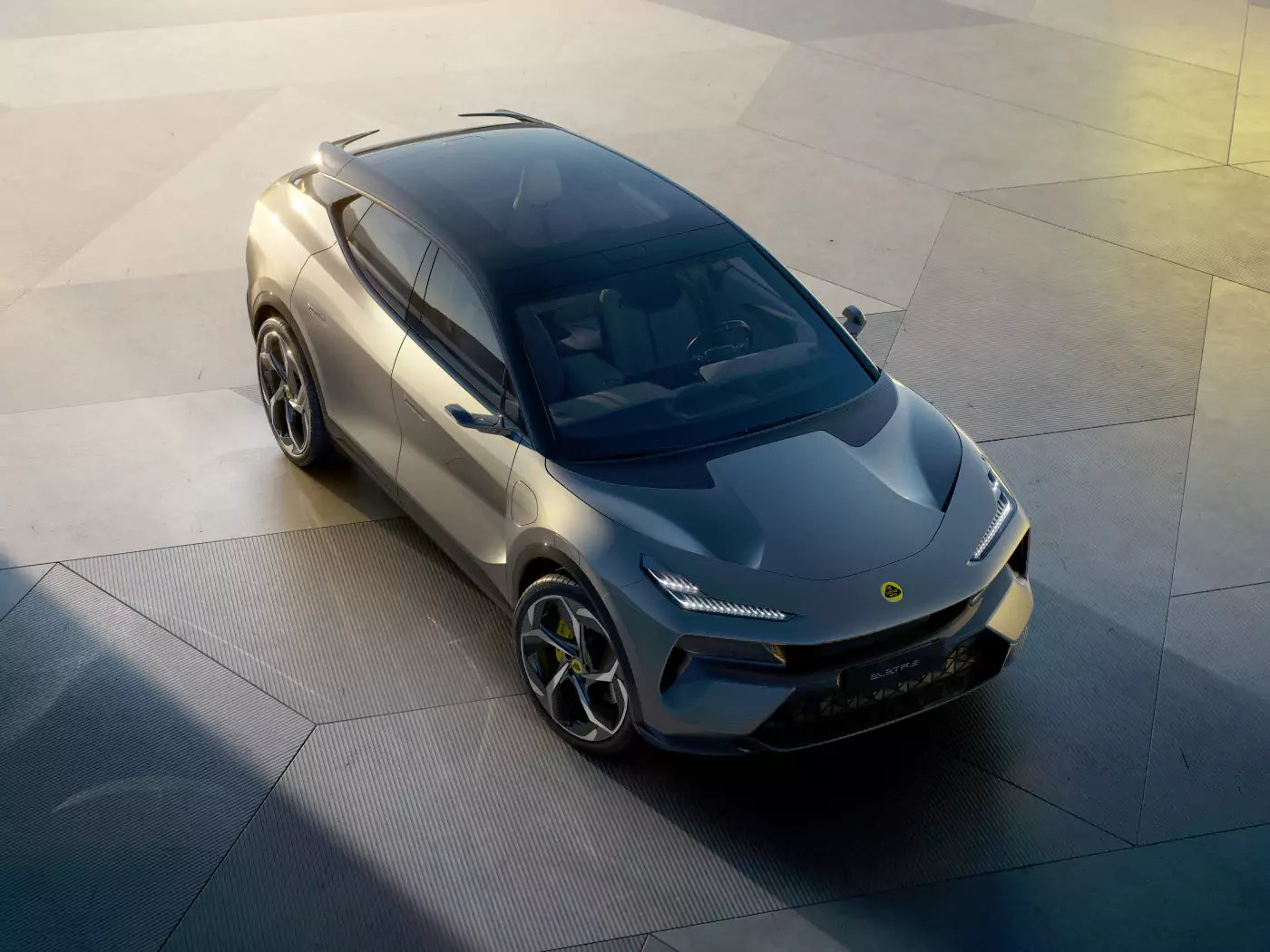In 2019 Lotus unveiled their pure electric supercar Evija, priced at $21.88 million, with a maximum horsepower of 2,000, which is currently the world’s second highest horsepower production car, actually announcing to the world that Lotus is going to fully transition to electrification. The first is the Lotus Eletre.
Compared to the Porsche Cayenne or Lamborghini Urus, the Lotus Eletre S+ version, with a zero 100 acceleration time of 4.5s and a range of 650 kilometers, is perfect for those who like to handle the performance and take care of the family. If you want the ultimate driving a car, you can choose the R + version, zero hundred acceleration time is 2.95s, this car has an exclusive track mode, is in the Nürburgring circuit for exclusive performance tuning tests, and the entire car configuration can be said to be the top of the line.

Then many people will wonder if the 4.5s acceleration time of the S+ version will not be very powerful. In fact, the performance is more than just fast motor power, fast acceleration, and strong power; it is also the car’s good handling and stable chassis. When you switch to Sport mode when you step on the electric door, it will let you feel a strong sense of pushback and has the power of the speed, and I think Lotus has taken into account all of these performances.

As a world-class supercar brand with 75 years of history, Lotus has engraved driving pleasure into its DNA, and the Lotus Eletre S+, an all-electric supercar SUV, comes fully equipped with basic features. For example, the Eletre S+ version comes standard with 3.5 degrees of rear-wheel steering, which is optional on the Porsche Cayenne at a premium. For a big car of 5.1 meters in length, active rear-wheel steering is a great thing to have. Another is that it has a 25-50mm dual-chamber air suspension with CDC continuously damped adjustable dampers, with adjustable body height, and soft and hard damping. The last is that the front and rear axles are equipped with active intelligent anti-roll bar, can be free to accurately deploy 6 free chassis system, high speed through the sharp bends body almost no little sideways, and the performance is very stable.

A car’s handling is not only about straight-line acceleration but also about the way it handles around corners. Overall, the Lotus Eletre S+ is a car that handles very well, has a strong performance and at the same time gives you a sense of security when you drive it.
Lotus Eletre Superior Performance
The convenience experience brought by Lotus Eletre’s leading intelligent technology can also be felt in dynamic driving. Lotus Eletre S+ is equipped with four Huawei 96-line scalable LiDAR, together with 508 TOPS arithmetic dual NVIDIA supercomputing chip, so that the vehicle achieves a high level of intelligent assisted driving ability, which is very practical in city roads, car parks and other scenarios. The suspension system hardware configuration is very advanced, and the front/rear are five-link independent suspension, so this car it from the hardware not only has strong intelligent driving at the same time driving texture is also very comfortable.

Lotus Eletre External Appearance
Generally speaking, most SUVs use more black, grey, and white colors, but Lotus Eletre uses yellow and green for both versions, which doesn’t look out of place on a purely electric supercar SUV. The entire exterior design language is still inherited from the Lotus Evija design style, and the design of a driver-centered driver’s seat, like a very traditional Lotus mid-engine sports car feel.
Lotus Eletre exterior adopts an aperture design; the whole car has seven groups of air ducts, a total of 14, and there is an independent wind tunnel laboratory for testing. Each group of air ducts penetrates a large wind tunnel. There is also a three-stage adjustable rear wing, a split wind-breaking rear wing and an active air intake grille at the front, a complete aerodynamic package that gives the Lotus Eletre a wind resistance coefficient of 0.26 cd and a downward pressure of 90kg.

The side design of Lotus Eletre also follows the same design concept for sporty handling, with 22-inch large wheels and six-piston calipers as standard across the range, giving a great performance at first glance. The Lotus Eletre is also available with optional ten-piston calipers, giving the car even more braking performance. Lotus is also the first production model to use streaming mirrors; when the time comes, you can spend money on an optional streaming mirror, which is paired with a screen full of technology.

Lotus Eletre Interior Design
The most attractive thing is that the screens in front of both the main driver and the passenger are of such a slender type, especially the LCD gauges, on which basically all the data are shown very clearly and concisely, and then with that AR-HUD in front the effect will be even better.
The other is a steering wheel similar to that of a supercar with very traditional shift paddles. On the tram the left side is the adjustment for energy recovery the right side becomes the adjustment for driving mode. Below that is a wireless charging and physical buttons, and the gearshift mechanism is also next to it.

In the control screen in the middle with the 8155 chip, the overall interface response and computing speed are very fast and clear, and the voice interaction corresponding speed is also very fast, only 1s. The whole car seat design adopts the one-piece supercar seats, and is equipped with seat ventilation heating and massage; most of the materials used in the car with the Kvadrat brand cooperation, the interior of the accessible part of the interior are all used in the feel of the outstanding and highly durable synthetic microfibre, the seats are made of advanced wool blend fabric, this material is 50% lighter than traditional leather to achieve further body weight. It’s worth noting that all of these materials are renewable and environmentally friendly, demonstrating Lotus’ commitment to the environment. The other thing is that when you switch to sports mode, its sides will tighten up for you, giving you the feeling of being tightly wrapped up.

The overall space in the back row is also not much of a problem, you can opt for a four-seat version or there are five seats for you to choose from five seats would be more family-friendly. There is a screen in the middle of the four-seat rear row to control some of the functionality of the seats. There is also a ten-level adjustable canopy for intelligent conversion from mist to full transparency. In addition, there is a standard 15-speaker KEF Premium audio system with up to 1,380W of power, with Uni-QTM and surround sound technology.

If I really have to pick out one drawback, it’s that the rear seats are the same hardness as the front, and the rear seats could have been made softer so that the ride would have been more comfortable.
Summary
Continuing 75 years of track genes, Lotus Eletre takes electricity to the street. In this car, I can feel that Lotus is not compromising on the trend of electrification, but rather embracing the change with open-mindedness, bringing both supercar-level driving fun and excellent intelligent technology experience. The spirit of “Everything for the driver” is deeply rooted in the brand’s connotation, and Lotus is still playing with fun and purity.


